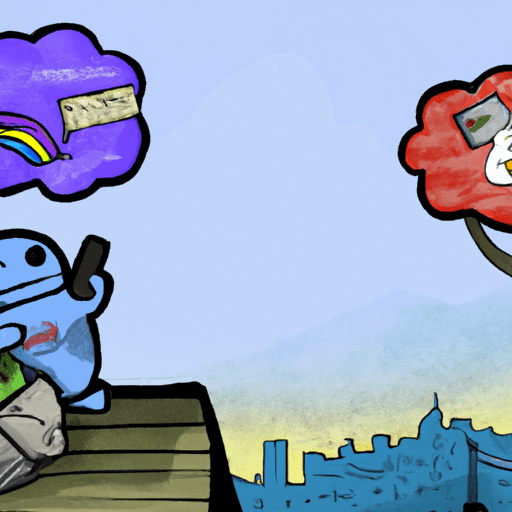Twitter in Turmoil: The Rise of Spill and Threads
Introduction
Ever since Elon Musk purchased Twitter, the once-popular social media platform has been in a state of chaos. From staff cuts to unpopular feature changes, Twitter has faced a series of challenges that have led to declining traffic and ad revenue. Moreover, for the first time in its 17-year history, Twitter now has to contend with direct competition. While there are several other popular social media platforms, such as Instagram, Facebook, TikTok, and YouTube, they all serve different purposes. However, two new contenders, Spill and Threads, have emerged as potential alternatives to Twitter.
Spill: A Black-Owned Twitter Alternative
One of the alternatives gaining traction is Spill, a visual-based conversational platform created by former Twitter employees. With an interface that resembles Tumblr more than Twitter, Spill allows users to share GIFs and images with up to 90 characters of text overlay. The shorter character limits on Spill promote concise conversations and keep the feed moving quickly. Though Spill has gained initial momentum, its restricted availability and exclusivity make it hard to assess its long-term success.
Threads: Meta’s Twitter Alternative
Another potential Twitter alternative is Threads, launched under the Meta umbrella by Mark Zuckerberg. Within a week of its launch, Threads amassed over 100 million users, thanks in part to its integration with Instagram. To join Threads, users must have an active Instagram account, and their Instagram credentials, username, bio, and followers are imported into Threads. The interface of Threads closely resembles Twitter, but it aims to create a more positive user experience by de-centering conversations related to politics and polarizing topics.
Challenges and Questions
As these new Twitter alternatives gain momentum, several important questions arise:
1. How will the introduction of advertising impact the user experience on these platforms?
2. Can Threads handle the pressure of sudden spikes in traffic should another Instagram outage occur?
3. Will Threads be successful in retaining its rapidly acquired user base?
4. Will Spill or Threads fully replace Twitter as the go-to platform for real-time text updates?
Assessment
After spending time on both Spill and Threads, it is evident that they each have their unique strengths and target different user preferences. While Threads may not entirely replace Twitter, it offers a compelling alternative for those more interested in text-based discourse than visuals. The launch of Threads has already had a noticeable impact on Twitter’s traffic, but the long-term effects of these new competitors remain to be seen. Ultimately, Spill and Threads bring fresh choices to users looking for alternatives to the traditional Twitter experience.
Closing Summary
Twitter’s tumultuous year due to changes, conflicts, and declining ad revenue has opened the door for competitors to emerge. Spill and Threads, two new alternatives, offer unique features and experiences for users seeking alternatives to Twitter. Spill’s visual-based conversational platform and shorter character limits cater to those looking for concise conversations, while Threads’ integration with Instagram and focus on positive user experiences attract a different user base. While these alternatives may not entirely replace Twitter, they present viable options for users seeking a change in their social media experience. With the entrance of Spill and Threads, the future of Twitter as the sole player in real-time text updates is uncertain.

